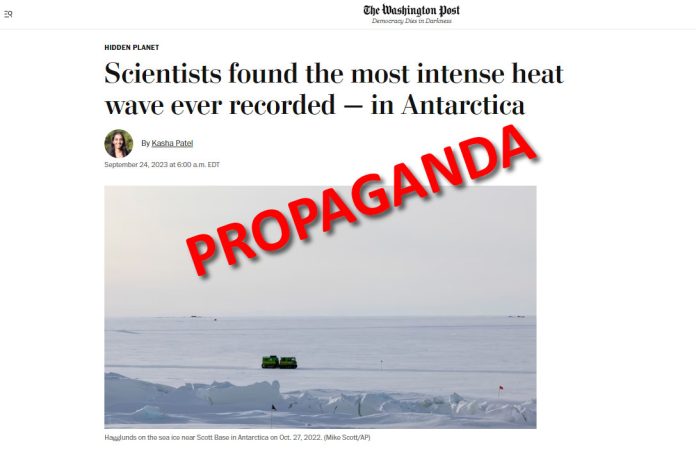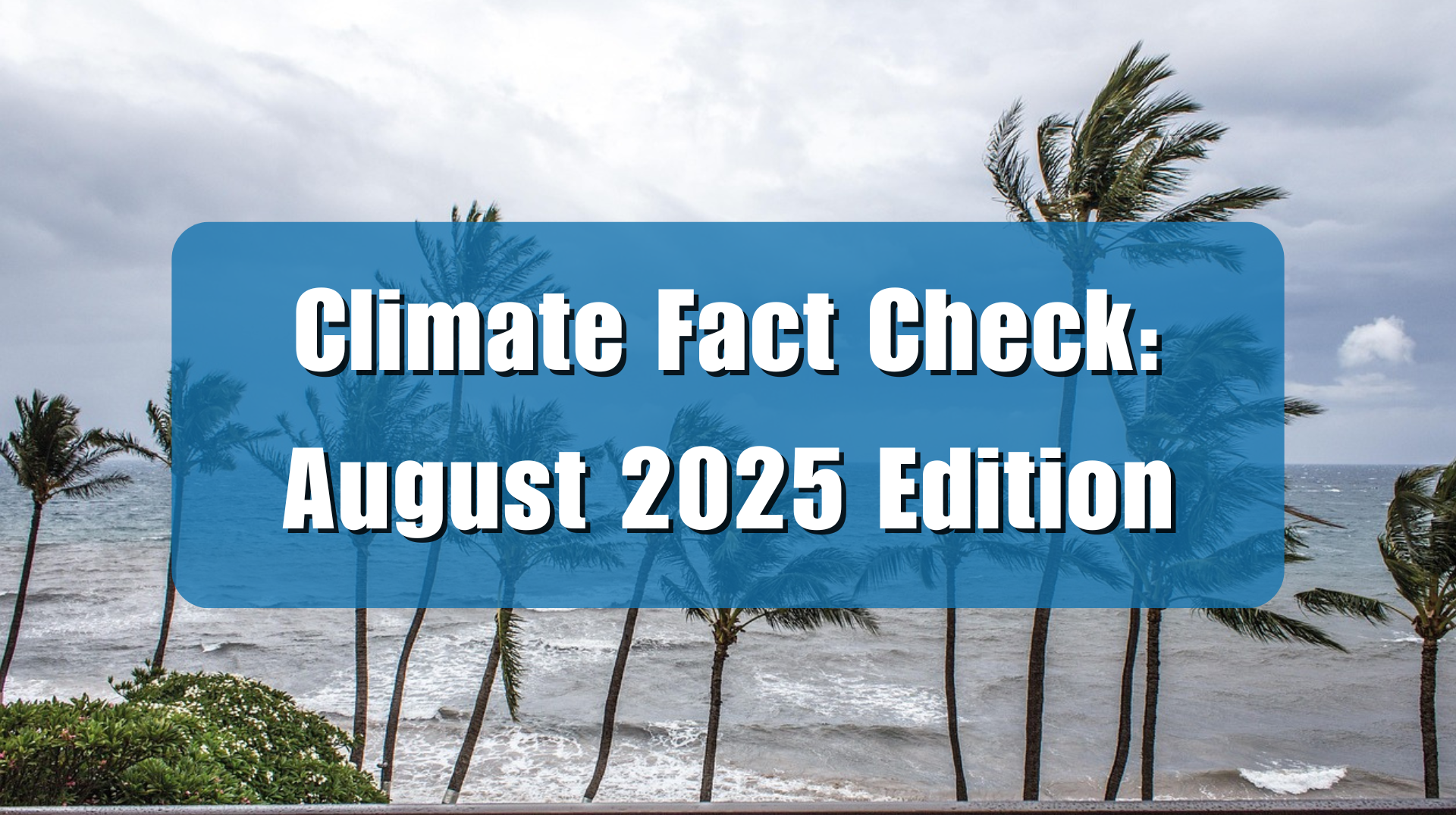It has been a busy year at the bottom of the world, from hot to cold with climate change in the middle of it all for the blame by media. For example, The Washington Post story Antarctic “Heat Wave” piece on Concordia Station back in March of 2022.
Or this one by The Business Standard: Researchers found the most intense heat wave ever registered- in Antarctica, Or Vox which claimed, It’s even hot in Antarctica, where it’s winter
Here is a collection of some facts about the issue that the media will never tell you.
From Frits Buningh on LinkedIn
Houston – We have a new All-Time Cold Record for Western Antarctica: August 2023!
Contrary to what 97% of the Journalists plus John Kerry, the Special Envoy for Climate related Propaganda for the United States of America are saying about the immanent “Melting” of all of Western Antarctica and the devastating Sea Level Rise that it will cause, who are quoting 3 % of the “Scientists” according to the Seminal Study Numbers provided by Cook et. all (2013), it looks like maybe Western Antarctica is not being subjected to 3 or 4 times the “Warming” that is taking place everywhere else on “Planet A”, that of course is “Planet Earth”. According to this article, https://www.westarctica.wiki/index.php
“In recent years the station has recorded a warming trend, with warming fastest in its winter and spring. This location, in the heart of the West Antarctic Ice Sheet, is one of the fastest-warming places on Earth.”
Not so fast, says the Data on the ground in Antarctica.
According to the Data provided by Ohio State University:
https://polarmet.osu.edu/datasets/Byrd_recon/
And the AMRDC depository at the University of Wisconsin at Madison:
https://amrdcdata.ssec.wisc.edu/

Upon which the table included here is based, it does look like there is a NEW All-Time Cold Record in 2023 for Western Antarctica’s Byrd Station.
August 1983: -42.5 C
August 198:1 -43.0 C
August 1978: -43.7 C
September 1986: -44.7 C
August 2023: -45.54 C
An All-Time Ever Record Cold Month since at least 1957? Maybe so! Stand by for the Copernicus Institute of Europe as well as the Climate Change Institute of the University of Maine, to hold a joint news conference later today to make the announcement official. Greta from Sweden, will be on hand to serve refreshments for the Journalists who are going to show up for that one? The NYT, WAPO and Jake Tapper form CNN have all been given a heads up that this is coming down the pike. Look for their reporting, especially from Kasha Patel, who brought us the “Heat Wave” piece on Concordia Station back in March of 2022. https://lnkd.in/eWtfvc2b
From SnowBrains:
The Concordia Research Station in Antarctica recorded a provisional low temperature of -117.76ºF (-83.2ºC) on July 25, marking the world’s lowest temperature in six years. The figure, still subject to official validation, was shared by Italy’s Antarctic Meteo-Climatological Observatory, along with data from the nearby Dome C II Automatic Weather Station, which also registered sub 112ºF (-80ºC) temperatures on July 24 and 25.

Jennifer Marohasy is feeling chill in Mawson Station, Antarctica.
(reposted from her Facebook page)
Last month (June 2023), Antarctica was reported as ‘hot’ in various publications including Vox.com. Yet the average maximum temperature for Mawson was minus 12.6 degrees Celsius, which is not quite as cold as the long-term June average for all years since 1954 which is minus 13.5 C. When the June maximum temperatures for Mawson are ranked highest to lowest, June 2023 comes in as the 29th hottest, and 42nd coldest – suggesting temperatures in Antarctica were not particularly newsworthy and rather cold.
Yet the tabloids, and fashionable, are claiming June 2023 as hot – even in Antarctica. It is all nonsense.
Some of these claims have their origin in the University of Maine’s Climate Reanalyzer, a tool that uses satellite data and computer simulations. So, they represent a re-modeled average. Indeed, there is not a single place where anyone, can measure the average temperature of the Earth – or Antarctica. Rather, when it is announced that it is the hottest it has ever been, reference is made to a statistic.
This average temperature is necessarily a number that has been derived from other numbers. There will perhaps have been some measuring done here and there, and then some adjusting, and then some adding up and some adjusting again. This is how it is with the calculation of regional and global average temperatures – whether from satellites, tree rings, ice cores, or thermometers. To be sure, every year we are told it is getting hotter, and back in the late 1980s, this was achieved for the globally averaged thermometer record by dropping out some of the colder weather stations. This had the effect of increasing the overall average global temperature, at a time when temperatures at many individual sites were dipping somewhat.
Those who have followed the politics of measuring temperatures may also remember the infamous line in the Climategate emails, whereby the globally averaged temperatures based on tree rings, which also show a decline after 1980, are ‘corrected’ by substituting the globally averaged temperature from thermometer records – never mind that the dip in that record had already been ‘corrected’ by removing data from a great many high latitude Canadian and Russian weather stations.
Drawing from this sordid history of calculating global and regional temperatures, I can think of a large number of ways that the University of Maine’s Climate Reanalyzer could possibly generate a higher-than-average temperature for Antarctica and especially the Earth.

Indeed, the larger the geographic area covered, the more opportunity for creative accounting, for which corporates using similar techniques would go to jail, while climate scientists are more usually promoted.
For more information on how temperatures are measured at Mawson, you can download the relevant chapter from Climate Change: The Facts 2020, that is here: https://climatechangethefacts.org.au/…/no-evidence-of…/






















Why can’t these people in the Maine and other institutes ever get the right information! After all it’s recorded data that they manipulate, massage, normalize, quantify and finally randomize! Just goes to show you any set of data can be slanted and skewed with the computer models and so forth! I’m sure Antarctica will still be icy cold
by anybody’s estimate and the oceans won’t notice anything either but ice flows and freezing conditions! Suffice it to say that whatever the alarmist climatologists are saying is probably not true and take it with a grain of salt!
We will see if the Grand Solar Minimum starts dropping temperatures soon. The GSM started in 2020 and is expect to last in 2023. The oceans hold a lot of heat so it is hard to cool them quickly.